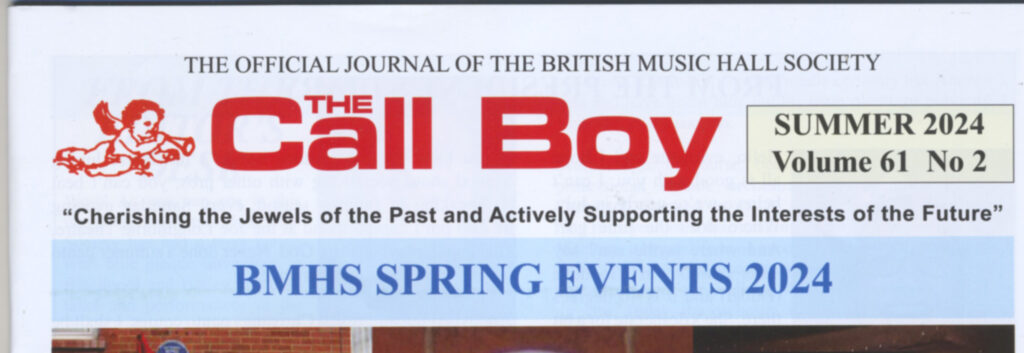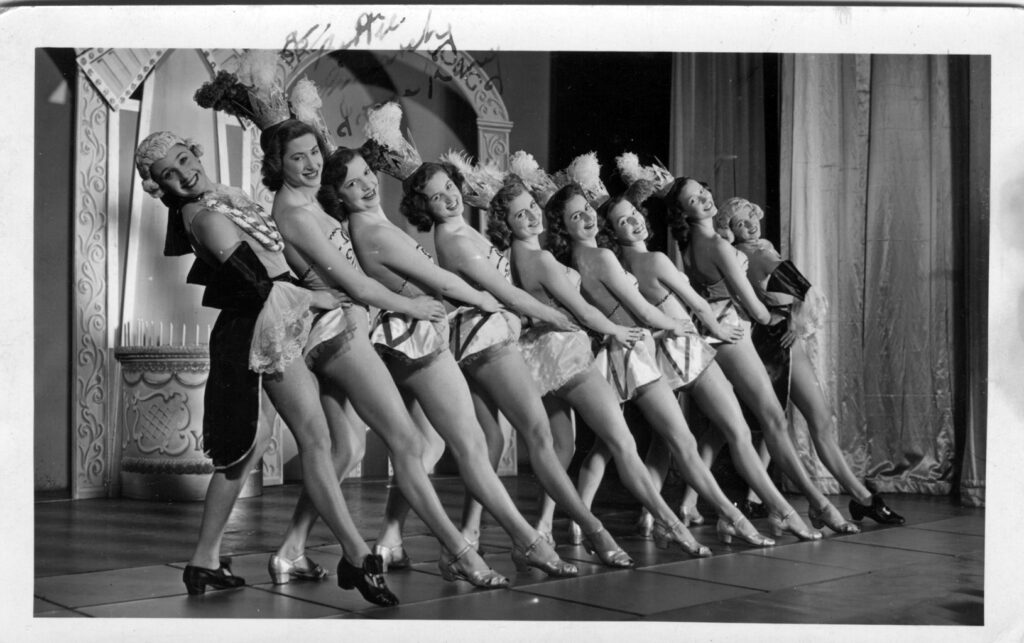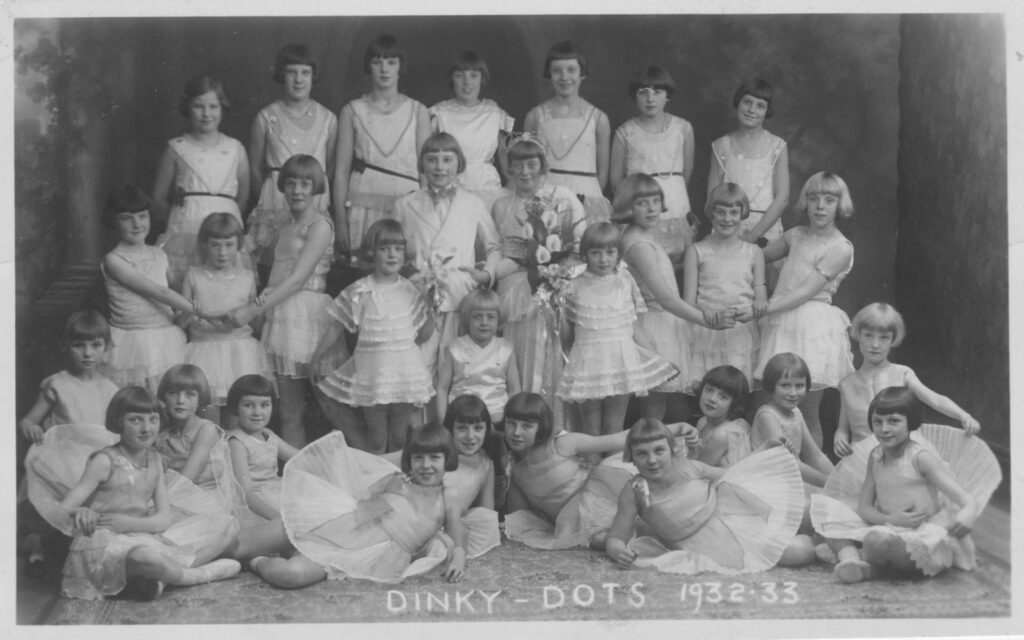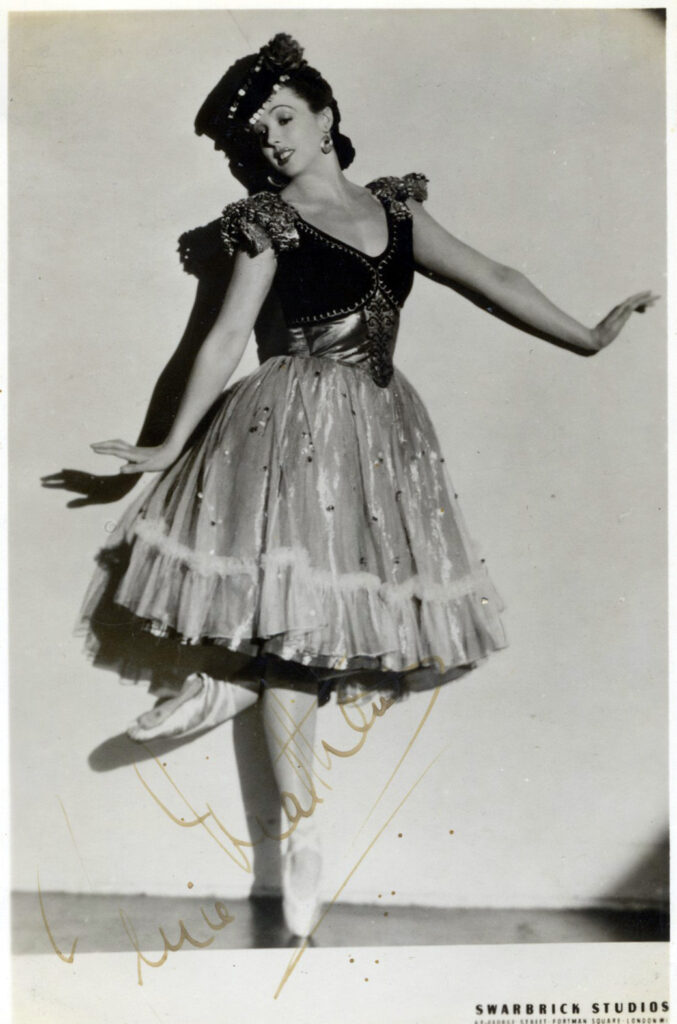

[This article was first published in The Call Boy,Summer 2024]
I collect old photographs and real photographic post cards. Most people following this hobby will at some point decide to specialise in a specific subject. In my case I began to notice how often photographs of girls in dance costumes began to crop up. It didn’t seem to matter what age they were or, in a few cases, what sex they were. There are many different categories of dancing girls to be seen from girls’ dance groups in school to exotic dancers to be seen in nightclubs and on the stage; from amateur solo dancers to large troupes of professionals. From the point of view of the Call Boy the photos of most interest are of the professional and semi-professional dancers that appeared in music hall, theatre and variety shows and it is these that I concentrate on here.
The most obvious place to start is with the Tiller Girls. I used to think that the Tiller Girls were just those dancers who appeared on Sunday Night at the London Palladium but was surprised to learn that the first Tiller Girls were trained by John Tiller in 1889 and that there have many different troupes trained using his methods ever since, some bearing the name Tiller Girls or Tiller Troupe but many going under different names. There is an excellent book tracing the history of the Tillers – Tiller’s Girls by Doremy Vernon which, though out of print, can easily be obtained on one the web auction sites.

Another famous group of dancing girls were to be found at the Windmill Theatre. Although they might be better known for their naked tableaux, the Windmill Girls performed dance routines in shows and they were in constant rehearsal for the new shows which changed regularly. You can find some fragments of routines by the Windmill Girls on YouTube, as you can for the Tiller Girls. There’s even a 1949 film shot in the Windmill Theatre called “Murder at the Windmill” which has recently been broadcast by Talking Pictures TV. There is also the Judi Dench/Bob Hoskins film “Mrs Henderson Presents” though I understand some liberties were taken with the storyline. The Windmill also published annual editions of a magazine, Revudeville, where you can find photographs of the dancers and their individual names. After publishing one photo of Windmill Dancers I was contacted by the son of one of the dancers!

Nearly every Music Hall and Variety bill had its share of female dancers, many if not most unnamed as they appeared in chorus lines. There were many variations on the type of dancers and, of course, they often presented skits and other entertainments as well as dancing. Juveniles seem to have been very popular and were often presented as if they were all members of the same family though this was not always true. “Model Maids” and “Dairymaids” were other popular ways to package dancers. My own collection of photographs and postcards suggest that troupes of dancing girls must have run into the thousands. Some, like the various Tiller troupes, lasted for many years whilst others probably had much shorter shelf lives. What happened to all the “juveniles” for instance? Herein lies the problem of collecting these materials in that it’s difficult or impossible to find reliable details and dates for when these troupes were active. Sometimes there’s a date on the reverse of a postcard and often there’s the name of the studio where a photograph was taken but handwritten dates are unreliable and most of the studios have long since disappeared. Even if a troupe was photographed at a named studio there’s no guarantee that the town where the studio was situated was the home town of the dancers. Trying to trace information about these dancers online is usually fruitless and shows up the inadequacies of the internet for any serious research into the history of these entertainers. Books such as “Grace, Beauty and Banjos” by Michael Kilgariff and “Roy Hudd’s Cavalcade of Variety Acts” contain lists of performers but seldom have any information on any but the most famous dance troupes
My own favourite “dancing girl” is Jessie Matthews, often known as the “dancing divinity.” At least in her case there is a plethora of information to be had on line and in print but best of all we still have her wonderful films from the 1930s. It’s tragic that she never got to work with Fred Astaire as apparently other work commitments prevented a planned project together.

The entire collection of my vintage dancing girls photographs and post cards can be found at https://flickr.com/photos/basilisksam/albums/ I am still collecting and still researching and would be interested to hear from anyone who can add to my knowledge of vintage dancing girls.